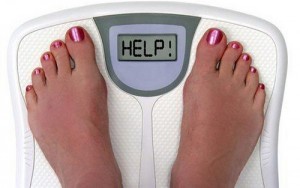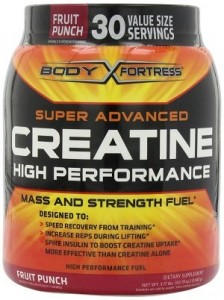Want more A’s? Get more Zzzz’s
November 24, 2015
For many 18-22 aged college students sleep is towards the bottom of priorities and is often the first thing to get neglected. Students have classes, homework, sports teams, work, Greek life, social lives and many other commitments that come before sleep! However, according to the National Sleep Foundation sleep is as vital as the air we breathe, the water we drink and the food we eat. It is recommended that collaged aged students get 7-9 hours of sleep per night but the average college student only gets 6-7 hours. Lack of sleep can seriously impact your health, mood, GPA and safety. You are not only more likely to fall asleep in your 8am classes you are also more likely to do worse on exams. Therefore before you choose to pull an ‘all-nighter’ studying for that final exam, or have a few drinks with your friends when you have work at 7am the next day, think about the unhealthy extra strains you are putting on your body and mind. After a goods night sleep you are more likely to be able to concentrate better, problem solve more efficiently and increase your memory therefore assisting in your ability to gain an A on that big final exam!
Negative Effects
- Lower your GPA. Including your ability to learn, listen, concentrate and solve problems.
- Break out in pimples. Lack of sleep can contribute to acne and other skin problems.
- Mood swings. Can lead to aggressive or inappropriate behavior such as yelling at your friends or being impatient with your teachers or family members.
- Weight gain. Can cause you to eat too much or eat unhealthy foods like sweets and fried foods.
- Illness. Increases your chances of getting a cold or flu due to a weaker immune system.
- Dangerous activities. Increases the chance of injury due to not using equipment safely or driving drowsy.
NOT so fun fact
When you are sleep deprived, you are as impaired as driving with a blood alcohol content of .08%, which is illegal for drivers in many states. Drowsy driving causes over 100,000 crashes each year. Recognize sleep deprivation and call someone else for a ride.
Only sleep can save you!
Sleep Disorders
Narcolepsy – Tendency to fall asleep during day time hours and falling immediately into a deep REM sleep. There is no cure but can be controlled using medicine.
Insomnia – Lack of quality and quantity of sleep. Treated by determining the cause of the problem and then changing your habits.
Restless legs syndrome – Having a strong urge to move your legs after going to bed causing problems falling asleep and waking up often. Treated by lifestyle changes and medicine.
Sleep apnea – When you stop breathing during your sleep repeatedly during the night. Treated by changing your lifestyle and wearing an oxygen mask during sleep.
Solutions
- Make sleep a priority. Keep a sleep diary.
- Nap smart! No more than 1 hour or after 3pm
- Make your room a sleep heaven. Keep it cool, dark and quiet.
- Your bed is only for sleeping. No studying or watching TV.
- Establish a routine. Try to go to bed and wake up every day around the same time.
- Don’t sleep in all weekend. This can shock your body and negativity effect your routine.
- Turn it off! Avoid TVs, computers and phones.
- Try taking a bath or reading a book just before bed to relax the mind and body.
- Keep a ‘to do’ list. So you don’t stay up all night worrying or stressing.
- Eat a little snack. Don’t eat too much before bed but have a little snack so your not hungry.
- Do some sort of physical activity throughout the day but try to avoid exercise just before bed.

Resources
https://www.uhs.uga.edu/documents/Sleep-Diary.pdf – Sleep Diary Example
https://www.youtube.com/watch?v=xQ6xgDI7Whc – Music to help you sleep!
http://www.sleepeducation.org/find-a-facility – Find your closest Sleep Facility
714 N. Senate Avenue
Suite 110
Indianapolis, IN, 46202
Phone: (317) 962-5710
Butler Health Services
HRC, Room 110
530 W. 49th St.
Indianapolis, IN 46208
Main Phone: 317-940-9385
References
https://sleepfoundation.org/sleep-topics/teens-and-sleep
http://www.aasmnet.org/articles.aspx?id=659
http://campusmindworks.org/students/self_care/sleep.asp
https://www.uhs.uga.edu/sleep/
http://www.helpguide.org/articles/sleep/sleep-disorders-and-sleeping-problems.htm
https://www.youtube.com/watch?v=3eLfn7Ewx_s – video
Healthy Lifestyles in Underdeveloped Countries
November 15, 2015
Within our every day lives the thought of where our next meal is going to come from is not an issue that we have to worry about. In underdeveloped countries however, this is a factor that controls the lives of millions. Poor nutrition, lack of quality education, and severe poverty run the lives of these people. About 2.5 billion people live in underdeveloped countries. Africa and Asia have the most underdeveloped countries, with Latin America contributing as well. Out of the 10 most underdeveloped countries in the world, 8 of them come from Africa, with the remaining 2 from Asia. It is not a shocking fact that the people who are living in these countries do not live healthy lifestyles. This, however, can be a trend that can begin to change. With the right help from organizations and gaining proper education, underdeveloped countries can start to lead more healthy lifestyles.
Hunger
- 795 million people in the world do not have enough food to lead a healthy active life. That’s about one in nine people on earth. The vast majority of the world’s hungry people live in underdeveloped countries.
- Poor nutrition causes 45% of deaths in children under five. That’s about 3.1 million children each year.
- One out of six children (about 100 million) in developing countries is underweight. Within those developing countries one in three children are stunted.
- Under-nourishment is used to describe the status of people whose food intake does not include enough calories to meet minimum physiological needs for an active life.
- Malnutrition is characterized by inadequate intake of protein, energy and micronutrients and by frequent infections and diseases. Starved of the right nutrition, people will die from common infections like measles or diarrhea. Malnutrition is measured not by how much food is eaten but by physical measurements of the body – weight or height – and age. Characteristics include being dangerously thin, being too short for one’s age and being deficient in vitamins and minerals
- Wasting is an indicator of acute malnutrition that reflects a recent and severe process that has led to substantial weight loss. This is usually the result of starvation and/or disease.
Poverty
- Over 2.5 billion people live on less than $2 a day, with nearly three-quarters of the population of Sub-Saharan Africa falling into this category.
- About 1.1 billion people in developing countries have poor access to water.
- About 2.6 billion people in developing countries lack basic sanitation.
- There are about 9 billion children from the developing world. One in three have inadequate shelter, one in five have no access to safe water, and one in seven have no access to health services.
Education
- One in four young people in developing countries are unable to read a sentence
- 175 million young people lack even basic literacy skills.
- An estimated 250 million children are not learning basic reading and math skills, even though half of them have spent at least four years in school.
- 774 million illiterate adults
- There is an increase in teacher numbers because people are being hired without training.
What the Underdeveloped Population Wants
In a study conducted where civilians from 13 different underdeveloped countries were asked the question “What do you want to see change?”, these were the top results:
- Reducing poverty
- Reducing hunger
- Reducing the spread of HIV/AIDS
- Providing more jobs for the youth
- Reducing the death rate of children under five
- Reducing the number of women dying in childbirth
- Achieving primary education for all

What can be Done?
As an individual so far removed from these issues it is difficult to understand how you can help the problem. There are so many organizations trying to combat the issues at hand. Some of these organizations are truly making an impact, while others are sometimes causing even more harm. Many people believe that the issue of world hunger can be resolved if the rest of the world simply donates mass amounts of food to the countries that need it the most. These countries are not accustomed to this surplus of food, and therefore do not understand the proper way to cook and eat the food. This goes back to the lack of education within underdeveloped nations. Without education these problems will not get solved. Children need to be learning from qualified teachers and need to be learning about the importance of health from a young age. This way even if they do grow up in poverty, they know the importance of nutrition and have the knowledge of what foods they can grow for themselves. Physical activity is another aspect that often times gets overlooked. Physical activity is essential in living a healthy lifestyle which is a fact that many people do not understand. If children are learning methods of physical activity in school, and the positive affects it has on the body, they are giving themselves a better shot at living a healthy life.
Resources
- The William and Flora Hewlett Foundation
- Global Partnership for Education
References
- http://www.wfp.org/
- http://www.givewell.org/international/technical/additional/Standard-of-Living#Incomeandassets
- http://www.theguardian.com/global-development/2014/jan/29/illiteracy-education-young-people-developing-countries
- http://www.globalissues.org/article/26/poverty-facts-and-stats
Media References
- https://www.ted.com/talks/josette_sheeran_ending_hunger_now
- http://love2others.org/projects/water/
- http://indiatoday.intoday.in/story/delhi-children-malnourished-child-rights-and-you-breastfed-nutrition/1/352583.html
- http://www.imdb.com/title/tt2625598/
- http://factsanddetails.com/world/cat57/sub380/item2155.html
Why Fads Can Become Bad
November 11, 2015
In a society where we constantly strive for perfection, satisfaction or success we often see these characteristics become aspects of everyday life of people. We see this come into affect largely when viewing body image, often we see models, and celebrities photo shopped/altered through media in these unrealistic ways and want to make our bodies look like theirs even if takes drastic measures. Some people have the financial stability to surgically alter their body, while most turn to the internet to find out what the next best diet is. While in the process it is not uncommon to come across a diet that offers you promising results typically in a short amount of time. So you’re telling me I can loose this much weight, this fast just by following these simple guidelines? Most people see themselves on their way to the perfect body in no time but sadly they are mistaken. More than likely what they have found is a fad diet.
What is a Fad Diet?
A weight loss plan or aid that promises dramatic results
- Typically don’t result in long-term weight loss and they are usually not very healthy. In fact, some of these diets can actually be dangerous to your health
Why are they Popular?
- People are willing to try anything that promises to help them look or feel better
- Many people prefer to try the quick fix rather than making long-term changes
- Also many fad diets work for short amounts of time
How to Recognize a Fad Diet?
- Limit your variety of food choices
- Claim to help you lose more than 1 or 2 pounds per week
- Require you to spend a lot of money on things for the plan to work
- Promise that you can lose weight and keep it off without giving up “fatty” foods or exercising regularly
The Atkins Diet
Dr. Atkins, a well- known cardiologist created the Atkins diet which limits the intake of carbohydrates. The idea behind this diet is to change the type of fuel you are burning so that you can lose more or maintain weight. You must reduce carbohydrates which are turned into sugars so that the body is burning and using fat as fuel and weight is being lost even when more calories are being consumed. It is presumed that in your typical diet calories are reduced but the body is still taking in a high amount of carbohydrates which are turned into sugars so our body will cycle between sugar “highs” and “lows”. During these highs the excess sugar will be stored in the body as fat and during the lows you feel fatigued and experience hungry and cravings.
Risks of Low-Carb Diets
Short term:
-Headache
-Bad breath
-Weakness
-Fatigue
-Constipation or diarrhea
Long term:
-Vitamin or mineral deficiencies
-Bone loss
-Gastrointestinal disturbances
-Increased risk for various chronic diseases
The SlimFast Diet
SlimFast is a weight loss plan that is focused on using meal replacements to help support weight loss and dieting. Most SlimFast plans can easily be related to your basic low-calorie diet, the latest of the ever popular Slim Fast plans is their “3-2-1 Plan”. The “3-2-1 Plan” consist of three snack, two meal replacement shakes or bars, and one actual meal per day. Ideally the meal replacements substitute breakfast and lunch while you eat a healthy 500 calorie meal for dinner. The shakes and meal bars advertised to curb hunger for up to four hours, while some still find that they are hunger after consuming them. Also over time products such as SlimFast can become expensive being that their plans call for multiple servings of their products in one day.
Risks of Liquid Diets
Short Term:
-Gallstone formation
-Nausea
-Fatigue
-Constipation
-Diarrhea
Long Term:
-Damage to the intestinal tract
-Impaired liver or kidney function
-Hypoglycemia
-Vulnerability to communicable diseases
-Gaining fat
The Fit for Life Diet
Harvey and Marilyn Diamond created the Fit for Life Diet which is diet based on food combining. The diet disregards calorie counts and controlling portion size but rather emphasizes the idea of combining the correct food and avoiding the wrong combinations of food to eat. This theory roots from the naturalistic view of Diamond, it is “dead foods” that clog or rot in the body while “living foods” cleanse the body. Some “dead foods” would be meats and starches while some “living foods” would be raw fruits and vegetables. A few rules are that no dairy foods should ever be eaten, only fruit and fruit juice should be eaten from the time one awakes until noon, and carbohydrates and proteins should never be put in the stomach at the same time. As one can see a diet like this has very strict restrictions.
Risks of Food Combining Diets
-Vitamin and mineral deficiencies (Calcium)
-Difficultly getting RDA’s
-Gastrointestinal disturbances

How to Lose Weight Healthily?
- Eat a variety of foods to help get all your daily nutrients
- Do not skip meals, especially breakfast
- Exercise on a regular basis
- Avoid calorie dense foods
- Control portion sizes

If you feel the need to change your lifestyle, rather than trying one these fads consult with a specialist which can be found here on our campus.
Butler University Counseling Services
530 W. 49th Street (HRC, Room 110)
Indianapolis, IN 46208
Phone: (317) 940-9385
References:
Davidson, Tish. “Fit for Life Diet.” Diet.com. N.p., n.d. Web. 11 Nov. 2015.
Lee, Kathrine. “The Slim-Fast Plan.” EverydayHealth.com. Everyday Health, n.d. Web. 11 Nov. 2015.
“Nutrition for Weight Loss: What You Need to Know About Fad Diets.” Nutrition for Weight Loss: What You Need to Know About Fad Diets. FamilyDoctor.org, n.d. Web. 11 Nov. 2015.
“Weight Loss.” Low-carb Diet: Can It Help You Lose Weight? MayoClinic.org, n.d. Web. 11 Nov. 2015.
“Weight Loss Programs & Benefits | Atkins.” Atkins. Atkins.com, n.d. Web. 11 Nov. 2015.
Media Sources:
https://www.youtube.com/results?search_query=fad+diets+commercials
http://bioshieldinc.com/how-can-you-take-advantages-from-raw-food/
http://www.huffingtonpost.com/jennifer-rollin/3-reasons-why-you-shouldn_4_b_8186614.html
Importance of exercise for your average Joe and plain Jane
November 3, 2015
With the new era and advances in technology we have seen the activity rate of the average individual plummet. How does technology relate to our activity levels? Well let me ask you, how often do you drive to work, the grocery store, even to go to the gym to exercise? You are not alone as many individuals fall into the convenience of having that available and so we drive or take public transportation. And the irony is that many individuals drive their vehicles to their local gym to work out and run. The average person needs about 150 minutes a week of activity to stay “healthy” (I put that in quotes because that is an arbitrary term used to label a norm when in reality the health of an individual is subject to their own personal bodies and functions). But exercise does not need to come solely, if any, from a gym or fitness center.
Physical Activity Vs. Exercise
All exercise if physical activity but not all physical activity is exercise. Exercise is a planned schedule to perform a kind of physical activity. Things such as walking for 30 min. However walking to your car is a physical activity and not an exercise. When talking about getting 30 minutes of activity a day for 5 days a week, that includes both physical activity and exercise. Instead of driving everywhere next time think about walking or riding your bike there as these simple changes can help you regulate your activity levels. Or take the stairs next time instead of the elevator.
Increased Physical activity
Weight control- helps prevent weight gain and aids in weight loss by burning calories.
Prevents health conditions and diseases- lowers the risk to many heart related diseases and diabetes.
Improves mood- stimulates brain and leaves you feeling more relaxed and feeling happier.
Boosts Energy- No more being winded or tired throughout the day. Physical activity delivers oxygen that helps you systems work better and more efficient leaving you more alert.
Better Sleep- helps you fall asleep faster and deepens the sleep for an overall better quality sleep
Health benefits
• up to a 35% lower risk of coronary heart disease and stroke
• up to a 50% lower risk of type 2 diabetes
• up to a 50% lower risk of colon cancer
• up to a 20% lower risk of breast cancer
• a 30% lower risk of early death
• up to an 83% lower risk of osteoarthritis
• up to a 68% lower risk of hip fracture
• a 30% lower risk of falls (among older adults)
• up to a 30% lower risk of depression
• up to a 30% lower risk of dementia
It can reduce your risk of major illnesses, such as heart disease, stroke, type 2 diabetes and cancer by up to 50% and lower your risk of early death by up to 30%
Not all activities or exercises are created equal
Whether you go to the local gym or increase your daily activity levels in your life the activities only count towards benefiting health if you are moving quick enough to raise your heart rate, breathe faster, and feel warmer. Just because you are taking the stairs now instead of the elevator it does not mean you walk up the stairs at a slow pace. The main objective is to get your body moving and to get your breathing harder and faster. One way to test if the activity is increasing heart rate and breathing rate is by doing a talk test. A talk test is a self evaluation while exercising that shows if you are able to talk but cannot sing a song. If you are unable to sing a song then that activity is working.
Moderation
The biggest word you will hear in this post is moderation. This blog is not written to make you drastically change you ways and have you out and exercising everyday and eating the right foods and getting the proper amount of sleep. It is to keep you aware of your body and possible threats that could occur with lack of physical activity. It is here to help you reflect on your daily routine and to make changes where you deem necessary. Maybe instead of watching television for 2 hours, you watch for 1 hour while doing sit ups or moving around. The main objective is to stray aware from a sedentary life and gradually move into a more active lifestyle which will have numerous benefits on your health.
Resouces:
Talk to your doctor before starting a new regimen
Access to Health 12th edition
Works Cited:
Donatelle, R. J. (2012). Access to Health (12th ed.). San Francisco, CA: Pearson Benjamin Cummings. Donatelle, R. J. (2012). Access to Health (12th ed.). San Francisco, CA: Pearson Benjamin Cummings.
Benefits of exercise. (n.d.). Retrieved November 3, 2015.
Fitness. (n.d.). Retrieved November 3, 2015.
Images:
http://cache4.asset-cache.net/gc/467180649-new-jersey-jersey-city-happy-man-on-weight-gettyimages.jpg?v=1&c=IWSAsset&k=2&d=PHreAxwUsT8X7jaWqvQENC9WtMKprHo6wW3FAN%2FKm4lKORPhscQtlrpl6Tsae9Ml
http://innovahealth2012.info/wp-content/uploads/2015/04/koko.jpg
http://livehealthy.chron.com/DM-Resize/photos.demandstudios.com/getty/article/41/134/78468149.jpg?w=650&h=406&keep_ratio=1&webp=1
Videos:
The Need for Creatine??
November 2, 2015
What is it and how can it be used?
“Creatine is a chemical that is normally found in the body, mostly in muscles. It is made by the body and can also be obtained from certain foods. Creatine is most commonly used for improving exercise performance and increasing muscle mass in athletes and older adults. There is some science supporting the use of creatine in improving the athletic performance of young, healthy people during brief high-intensity activity such as sprinting.”
Do you need it?
Who you are and what your goals in life are can give you that answer. Whether you are an athlete, a gymrat, or an average individual, creatine will always be found within the human body. With those individuals, fitness level, age, sport, and the dose can effect how the body reacts and ultimately puts the added creatine to work. The reason people use creatine is to simply supply the body with needed energy to make muscles perform at their best.
We do however receive creatine through our diets. The best way to receive creatine through eating would be to consume poultry, meat, and fish.
What will it do for the body?
Good
- Increase the amount of energy available to working muscles*
- Creates ATP (Adenosine Triphosphate)*
- Increase muscle mass*
- Pulls water to muscles**
- Less fatigue*
- Faster muscle recovery*
- Weight gain*
Bad
- Nausea*
- Cramping*
- Dehydration*
- Increased blood pressure*
- Weight gain*
- Pulls water to the muscles**
* Not the same for every individual!
**Hydration is key when taking creatine
Popular Facts & Myths
Creatine is the same as anabolic steroids? Myth, steroids mimic testosterone whereas creatine is naturally produced.
Creatine causes weight gain? Fact, creatine pulls water to the muscles and it is the main point in taking the supplement (you gain muscle fibers when you start to workout).
You shouldn’t take too much? Fact, no more than 20 grams a week is needed, any more is illogical.
Resources: Contact you doctor/local nutritionist to see if creatine is right for you.
References:
“Creatine Facts and Myths.” Men’s Health. Web. 3 Nov. 2015
“Pros and Cons of Creatine-HRFnd.” HRFnd. 15 Mar. 2014. Web. 3 Nov. 2015.
Annussek, Greg;, “creatine.” A Dictionary of Nursing. 2008, “creatine.” A Dictionary of Biology. 2004, and David A. “Creatine.” Encyclopedia.com. HighBeam Research, 2005. Web. 3 Nov. 2015.
“Creatine: MedlinePlus Supplements.” U.S National Library of Medicine. U.S. National Library of Medicine. Web. 3 Nov. 2015.
Images:
http://store.bbcomcdn.com/images/store/prodimage/prod_prod2060042/image_prodprod2060042_largeImage_X_450_white.jpg
https://images-na.ssl-images-amazon.com/images/G/01/aplus/detail-page/B001G8Y8U8_creatine_hp_sm.jpg
https://www.fourbody.com.au/images/P/Musashi-Growling-Dog-Creatine-500g_8.jpg
http://piacomm.com/wp-content/uploads/2015/07/Water-bottle.jpg














